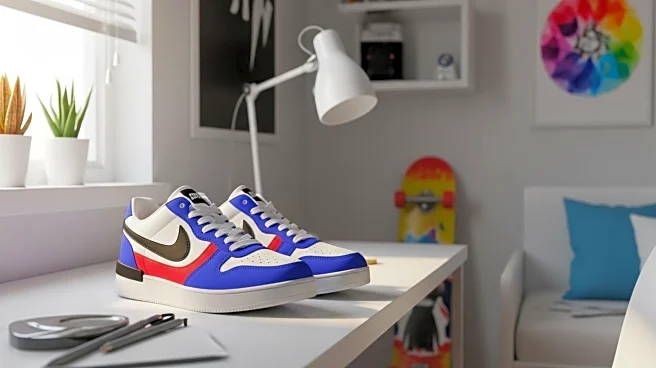What's Happening?
As the new school year begins in the United States, Nike's dominance among school-aged children and teenagers has notably decreased. According to a survey conducted by the investment bank Stifel, Nike's market share among sneaker retailers catering to this demographic has dropped from 88% two years ago to 38% this year. Brands like New Balance and Adidas have gained popularity, with others such as On and Hoka also capturing market share. This shift indicates a change in consumer preferences among Gen Alpha, the generation following Gen Z. Additionally, the back-to-school season has seen a competitive landscape in clothing, with American Eagle and Hollister vying for attention. Hollister reported a 19% increase in sales during the second quarter, while American Eagle has gained visibility through collaborations and advertising campaigns.
Why It's Important?
The decline in Nike's popularity among American teens could have significant implications for the brand's market strategy and financial performance. As competitors like New Balance and Adidas gain traction, Nike may need to reassess its approach to engaging younger consumers. This shift also reflects broader trends in consumer behavior, where brand loyalty can be influenced by cultural and social factors. For the fashion industry, the competitive dynamics between American Eagle and Hollister highlight the importance of strategic marketing and collaborations in capturing the attention of young consumers. The evolving preferences of Gen Alpha could shape future trends in both footwear and apparel, impacting retail strategies and brand positioning.
What's Next?
Retailers and brands are likely to continue monitoring consumer preferences closely, adapting their strategies to align with the interests of Gen Alpha. Nike may explore new marketing campaigns or product innovations to regain its market share. Meanwhile, American Eagle and Hollister will likely continue their competitive efforts, potentially introducing new collaborations or advertising initiatives. As the school year progresses, further data on sales and consumer behavior will provide insights into the effectiveness of these strategies. The fashion industry will also be watching for any shifts in brand loyalty and purchasing patterns among young consumers.












